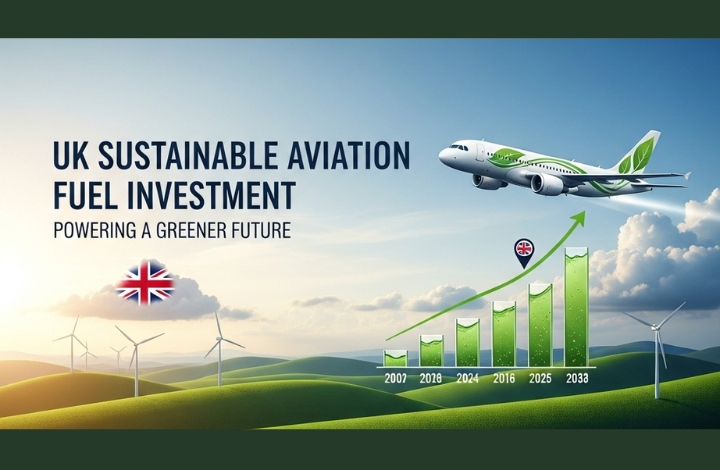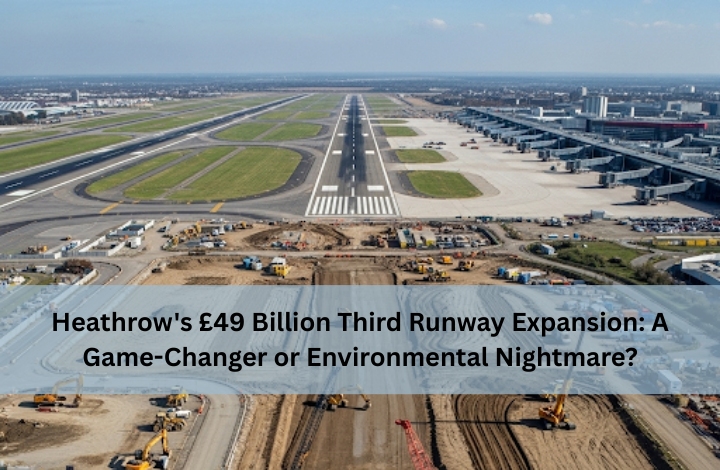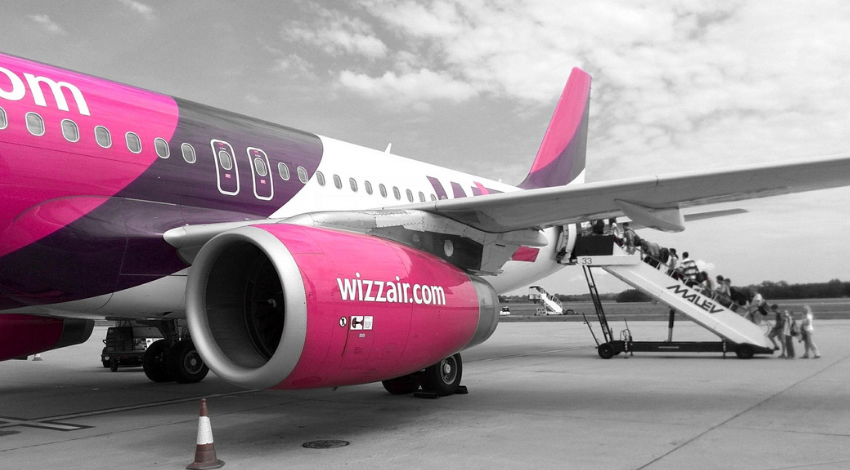The United Kingdom is embarking on the most significant transformation of its airspace infrastructure in over seven decades, promising to revolutionize how aircraft navigate British skies. The creation of the UK Airspace Design Service (UKADS) in 2025 represents a fundamental shift from aviation's early days to a technologically advanced, environmentally conscious future that could reshape the entire industry.
The Scale of Transformation
When UK airspace was first designed in the 1950s, it handled a modest 200,000 flights annually. Today, that figure has increased thirteen-fold to 2.7 million flights per year, with forecasts predicting nearly double the current passenger and cargo volume within the next two decades. The existing system, built around ground-based radio beacons and fixed flight paths, has become fundamentally inadequate for modern aviation demands.
Aviation Minister Mike Kane emphasizes the urgency: "UK airspace is one of the nation's biggest invisible assets, but it's been stuck in the past – a 1950s pilot would find that little has changed". This modernization represents what officials describe as a "once-in-a-generation infrastructure programme" that could be completed by the end of the decade.
The UK Airspace Design Service: A Revolutionary Approach
The establishment of UKADS marks a radical departure from the fragmented approach to airspace management. Unlike most countries where individual airports and air navigation service providers develop their own airspace designs, the UK has created a single coordinating authority to manage this complex transformation. NATS (En Route) plc will operate UKADS, leveraging their expertise as "the only organization in the UK with the necessary level of resource and design expertise to deliver the UKADS at pace".
The service will initially focus on London's airspace, the most complex in the UK, where twelve airports are simultaneously progressing overlapping airspace changes. This coordinated approach addresses what has become an increasingly unworkable system of individual airport modifications that often conflict with neighboring operations.
Environmental and Efficiency Benefits
The environmental implications of airspace modernization are substantial. UK airspace modernization at the network level has already enabled approximately 60,000 tonnes of CO2 savings annually from changes delivered over the past three years. The full modernization program promises even greater environmental benefits through multiple mechanisms:
Fuel Efficiency Improvements: More direct routing and optimal flight paths could reduce aviation emissions by 10-15% per flight. NATS predicts that eliminating inefficient step climbs and enabling continuous descents could save "just under 10% fuel burn" while simultaneously reducing emissions and operating costs.
Holding Pattern Elimination: Currently, aircraft arriving at busy airports like Heathrow spend cumulative hours circling in holding patterns. Six out of ten Heathrow arrivals are caught in these patterns, releasing an estimated 600 tonnes of CO2 daily into London's skies. The modernization aims to virtually eliminate these inefficient holding stacks.
Advanced Navigation Technology: The implementation of Performance Based Navigation (PBN) enables aircraft to follow precise satellite-guided routes rather than the historical ground-beacon system. This technology allows for more accurate positioning within one nautical mile compared to the current five-mile standard.
Technology Integration and Innovation
The modernization program represents a comprehensive technological upgrade spanning multiple aviation domains:
Satellite Navigation Systems: The transition to Global Navigation Satellite Systems (GNSS) provides unprecedented accuracy for aircraft positioning and routing. This satellite-based system replaces decades-old ground-based radio beacons, enabling more precise and efficient flight paths.
Artificial Intelligence and Predictive Analytics: NATS has deployed iTec, a £600 million system using predictive analytics software called iFacts, which can predict aircraft positions up to 18 minutes in advance. This four-dimensional air traffic management (incorporating time alongside latitude, longitude, and altitude) allows controllers to optimize flight paths proactively rather than reactively.
Digital Communication Systems: EasyJet's recent implementation of Future Air Navigation System-C (FANS-C) across 54 aircraft demonstrates the potential for enhanced air traffic control communication. This system enables text-based instructions and real-time trajectory sharing, reducing miscommunications and improving efficiency.
Operational Transformations
The modernization program fundamentally alters how aircraft operate within UK airspace:
Continuous Climb and Descent: Modern procedures allow aircraft to climb continuously to cruise altitude and descend smoothly to landing, eliminating the traditional stepped approaches that waste fuel and increase noise. These procedures offer "triple benefits: reduced CO2 emissions, reduced noise of up to five decibels below the approach path, and reduced fuel consumption".
Dynamic Route Management: Rather than following fixed "highways in the sky," aircraft will use flexible routing that adapts to real-time conditions. This system enables more direct paths and better traffic flow management.
Extended Arrival Management: Systems like XMAN (Extended Arrival Manager) have already demonstrated significant benefits at Heathrow, reducing holding times by up to one minute per flight and saving 15,000 tonnes of CO2 annually. By managing aircraft speeds hundreds of miles before arrival, the system minimizes the need for energy-intensive holding patterns.
Future Aviation Integration
The modernization program explicitly prepares UK airspace for emerging aviation technologies:
Electric Vertical Take-off and Landing (eVTOL) Aircraft: The Civil Aviation Authority has published comprehensive safety analysis research identifying over 50 high-priority areas for safe eVTOL integration. This proactive approach ensures that "flying taxis" and other electric aircraft can seamlessly enter UK airspace within the next few years.
Drone Operations: The modernization includes provisions for commercial drone operations, autonomous aircraft, and other unmanned systems that require precise airspace coordination. The system's flexibility will accommodate these emerging technologies without disrupting traditional aviation.
Hydrogen and Electric Aircraft: As the aviation industry transitions to zero-emission technologies, the modernized airspace will support these aircraft's unique operational characteristics and performance requirements.
Economic Impact and Industry Response
The aviation industry has broadly welcomed the modernization initiative. Tim Alderslade, CEO of Airlines UK, described the changes as "long overdue" and emphasized the industry's eagerness to complete this "once-in-a-generation infrastructure programme as quickly as possible".
Cost Savings for Airlines: More efficient routing translates directly to fuel savings and improved aircraft utilization. EasyJet has identified UK airspace inefficiencies as contributing to a 10.6% increase in CO2 emissions, highlighting the significant potential for improvement.
Capacity Increases: The modernization will add substantial airspace capacity without requiring new runways, potentially supporting UK aviation growth of 78% while achieving net-zero emissions. This capacity expansion is crucial as passenger numbers are expected to reach 7.3 billion globally by 2034.
Employment Generation: The program is expected to create thousands of jobs across the aviation sector, from air traffic controllers to aerospace engineers specializing in advanced navigation systems.
Implementation Challenges and Timeline
Despite the ambitious goals, the modernization faces significant challenges:
Regulatory Complexity: The Civil Aviation Authority's CAP 1616 airspace change process requires extensive consultation and approval procedures. While the CAA plans to streamline these processes by September 2025, the complexity of coordinating multiple stakeholders remains substantial.
Community Concerns: Airspace changes inevitably redistribute noise impacts, potentially affecting communities that previously experienced minimal aircraft noise. The CAA's process requires comprehensive consultation with affected communities, but this democratic approach can slow implementation.
Technical Integration: Modernizing airspace while maintaining safety standards requires careful coordination of multiple systems and technologies. Chris Norsworthy from NATS warns that "transforming national infrastructure of this nature requires years of effort".
Global Context and Competitive Advantage
The UK's comprehensive approach to airspace modernization positions it as a global leader in aviation innovation. Martin Rolfe, CEO of NATS, notes that "the UK's airspace network is one of the busiest and most complex in the world," handling "a quarter of Europe's traffic despite having only 11% of its airspace".
This modernization effort aligns with the European Single European Sky initiative while maintaining UK-specific advantages post-Brexit. The coordinated approach through UKADS represents a more integrated solution than the fragmented systems used in many other countries.
Environmental Commitments and Net Zero Goals
The airspace modernization directly supports the UK's commitment to achieve net-zero aviation emissions by 2050. Combined with sustainable aviation fuels and new aircraft technologies, airspace efficiency improvements could deliver up to 29% reduction in CO2 emissions by 2050 compared to baseline scenarios.
The program's environmental benefits extend beyond carbon reduction to include noise mitigation through precise routing that avoids populated areas and enables quicker climbs after takeoff. However, these improvements must be balanced against potential growth in flight volumes that could offset efficiency gains.
The Road Ahead
UKADS will become fully operational by the end of 2025, with initial focus on London's complex airspace before expanding to other regions. The Department for Transport and CAA will consult on regulatory changes by September 2025 to facilitate faster implementation while maintaining safety standards.
The success of this modernization program could serve as a model for other countries facing similar airspace capacity constraints. With aviation continuing to grow globally, the UK's integrated approach to airspace design represents a crucial step toward sustainable aviation growth.
As Aviation Minister Mike Kane concludes, "Modernising our airspace is also one of the simplest ways to help reduce pollution from flying and will set the industry up for a long-term sustainable future". This transformation from 1950s infrastructure to cutting-edge aviation technology represents not just an upgrade, but a complete reimagining of how aircraft navigate one of the world's busiest airspace systems.
The next decade will determine whether this ambitious modernization can deliver on its promises of quicker flights, reduced emissions, and enhanced capacity while managing the complex challenges of community impact, safety standards, and technological integration. The success of this program could fundamentally reshape not just UK aviation, but serve as a blueprint for global airspace modernization in the era of sustainable flight.
Leave A Reply
Your email will not be published. Required fields are marked.










 September 5, 2025
September 5, 2025













